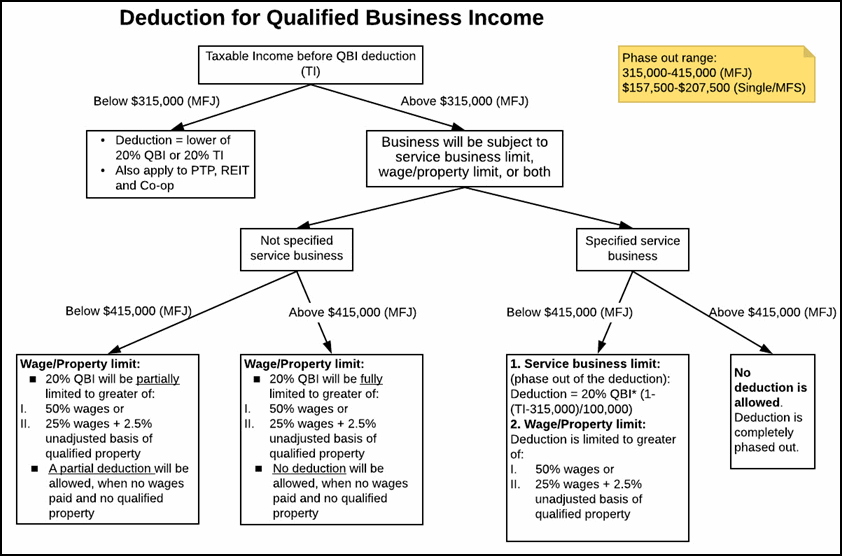Overview of the qualified business income (QBI) deduction
by Intuit•7• Updated 2 weeks ago
Want to learn more about QBI Deductions with Multiple Entities? You can watch our webinar on How to plan for Multiple Business Entity Impacts on the Qualified Business Income Deduction. See here to view the recording.
Before you start:
This article provides general information about the qualified business income (QBI) deduction so you can learn more about how it works and the scenarios that apply to it. Click here to use the QBI Entity Selection Calculator. To learn how the deduction is calculated in your product, click on the relevant link below:
- ProSeries
- Lacerte
- ProConnect Tax
Related topics:
Sign in now for personalized help
Ask questions, get answers, and join our large community of Intuit Accountants users.
More like this
- How to enter and calculate the qualified business income deduction, section 199A, in ProSeries on Form 8895by Intuit
- Calculating the qualified business income deduction, section 199A, in ProConnect Taxby Intuit
- Lacerte Complex Worksheet Section 199A - Qualified Business Income Deduction for tax year 2018by Intuit
- Understanding qualified business income (QBI) reductionsby Intuit


